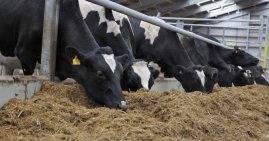After an incredibly wet spring, with grazing being more off than on during March, the significance of having a reserve of available, high quality silage in yards has fallen sharply into focus.

For many this spring, milk protein percentages have proven a struggle, with average quality silage making up a large proportion of the diet. Youngstock turnout was delayed and we are now trying to make up ground to ensure breeding target weights are met. Counteracting these issues led to an increased meal bill where silage quality was poor.
Remember, grass silage makes up approximately one quarter of the annual feed budget on the average Irish dairy farm and is even greater in beef situations.
At one point, every farm will have 80% DMD grass available to them in the field. However, the decision is often made too late regarding the cutting date.
Flexibility in feed plans
Where silage stocks are depleted, the temptation to chase bulk may creep in. However, it is well proven that high quality silage allows for flexibility in feed plans. Earlier cutting also allows for quicker and earlier regrowths for subsequent cuts, leading to increased annual yield per hectare.
Once seed heads appear typically by late May, DMD will be around 70% at most and will drop by 1% DMD every two to three days after that.
With the renewed value now placed on our main home grown forage, achieving a good fermentation to preserve it is critical. The use of a silage additive has long been proven to improve fermentation, lending to less waste/losses.
Agritech’s GrasZyme Sugarboost is proven to: Increase ADG by 110g/head/day in beef situations, Increase Dry Matter intakes by 0.4 kg/head/day and milk protein percentages by 0.09% – while also reducing fermentation losses by 6.1% (equating to 30t on a 500t pit).
For more information, contact your local Agritech Sales Advisor.

